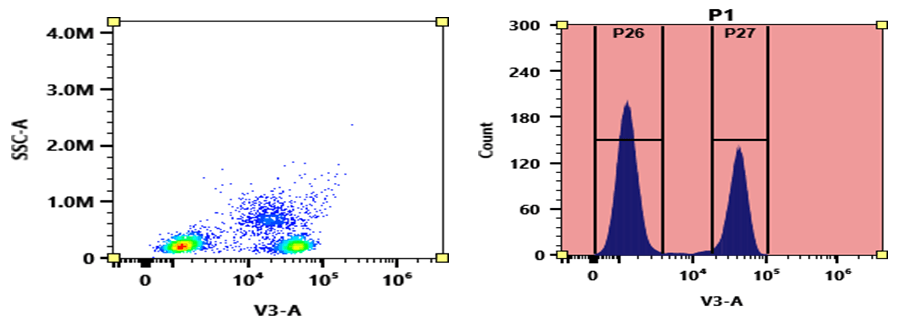PacBlue succinimidyl ester
equivalent to Pacific Blue succinimidyl ester
PacBlue succinimidyl ester is the same molecule to Pacific Blue™ succinimidyl ester (Pacific Blue™ is the trademark of ThermoFisher). The amine-reactive Pac Blue succinimidyl ester can be used to prepare the blue fluorescent antibody conjugates that can be well excited by the 405 nm spectral line of the blue diode (violet) laser. These antibody conjugates are widely used in flow cytometry applications.


| Catalog | Size | Price | Quantity |
|---|---|---|---|
| 570 | 5 mg | Price |
Physical properties
| Molecular weight | 339.21 |
| Solvent | DMSO |
Spectral properties
| Correction factor (260 nm) | 0.15 |
| Correction factor (280 nm) | 0.2 |
| Extinction coefficient (cm -1 M -1) | 46000 |
| Excitation (nm) | 404 |
| Emission (nm) | 455 |
| Quantum yield | 0.78 |
Storage, safety and handling
| H-phrase | H303, H313, H333 |
| Hazard symbol | XN |
| Intended use | Research Use Only (RUO) |
| R-phrase | R20, R21, R22 |
| Storage | Freeze (< -15 °C); Minimize light exposure |
| UNSPSC | 12171501 |
| CAS | 215868-33-0 |
Documents
Contact us
| Telephone | |
| Fax | |
| sales@aatbio.com | |
| International | See distributors |
| Bulk request | Inquire |
| Custom size | Inquire |
| Technical Support | Contact us |
| Request quotation | Request |
| Purchase order | Send to sales@aatbio.com |
| Shipping | Standard overnight for United States, inquire for international |
Page updated on December 17, 2025

